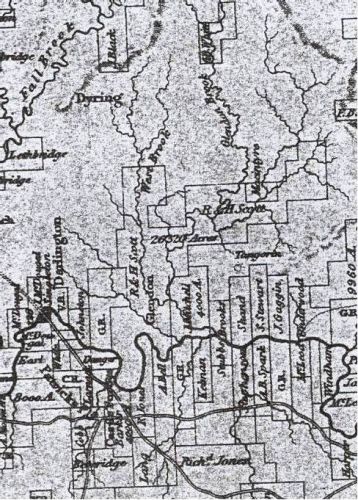John Earl - Settler
Glenridding - Map 2
John Earl arrived with his wife Ann (formerly Mounsey; Holmes) and five children on the Thalia in 1823. The Thalia departed England in October 1822 and arrived in Hobart on 27 April 1823. Among those on board were the families of - Pike, Geiss and Lawes and eight other passengers including a Mr. Boucher.
Land Grant
After bringing with him recommendations as a free settler, John Earl was granted 1500 acres, and in 1823 he sailed to Newcastle on the Fame possibly to select his land.His selection, Glenridding, was situated in the parish of Whittingham near Singleton.

Assigned Convict Servants
He was granted permission to be supplied from the stores at Newcastle for himself, wife and five children as well as his convicts servants who accompanied him to Glenridding in 1823.....-
Joseph Charles arrived on the Mangles in 1820
-
John Morton arrived on the Mangles 1820
-
John Foley arrived on the Canada 1819
-
James Miller arrived on the Canada 1819
-
Mathew Fox arrived on the Daphne 1820
In 1832 William Strainton, George Boxhall and Thomas Canavan were assigned servants. Twenty four year old John Watson who arrived on the Recovery was employed by Earl as a labourer.
Dismissed from Position of Constable
Soon after John Earle arrival in the Hunter Valley some of his assigned convicts absconded and he was afterwards in dispute with constable of the district Benjamin Singleton whom Earl considered did not carry out his duties adequately. He replaced Benjamin Singleton as Constable for the district but later was accused of being unfit for the position of constable by Magistrates Messrs Close and Scott and was dismissed from the position himself in 1825.Innkeeper
In the 1828 Census John Earl's occupation is Innkeeper at Patrick Plains. He resided with his wife Ann and daughter Dorothea at Patrick Plains.Reminiscences
In March 1920, the centenary of the discovery of Singleton, the Singleton Argus published the following account .....The late Mr Wm. Stevenson, father of Mr. R. Stevenson, of Redbournberry, was a shipmate of Mr Benjamin Singleton. The late Mr Stevenson came here from Windsor in 1837, and settled in the locality now known as Glenridding. Mr R. Stevenson, who is probably the oldest living native of Singleton, was born at Glenridding - on 14th January, 1839. He has distinct recollections of this place (Singleton) in the forties, when there were about 40 dwellings all told. Those were mainly along what is now George-street, with a few scattered among the timber on the flat. The style of architecture was very primitive, the dwellings being constructed of split slabs, with stringy bark or thatch roofs. Shutters served the place of glass windows in those days, and the floors were mother earth. Any cracks in the walls were plastered. Settlers who could not soar to the dignity of a slab dwelling lived in houses made of bushes. Of course, there were no set-in tubs or baths, and no tanks or wells. Water for domestic supplies was brought in casks on slides or in wooden buckets from the river,-and the Hunter was also-the washing day or for the weekly bath. Mr Stevenson says he went to a school in 1846, conducted by a Mr. (John) Keating, and there were about 20 pupils. The school was built of slabs and bark.
Return to England
In 1840 John Earl sold his estate and returned to England. His wife Anne remained in Australia.Benjamin Singleton
In 1842 Benjamin Singleton was occupying Glenridding, either as an owner or tenant. His son Benjamin was in charge and had nine employees, all free men. In this year (1842) there was a crop of 42 acres of wheat on Glenridding. - Singleton Argus 7 June 1935.Captain William Russell
Glenridding was later acquired by Captain William Russell. Captain Russell arrived in the colony in 1837 and became a pastoralist and agriculturalist. He later acquired other properties as well including Ravensworth, Waverley and Cheshunt Park. William Russell died in England in 1866.Notes and Links
1). Glenridding Uniting Church Cemetery2) Singleton Family History Society
↑
